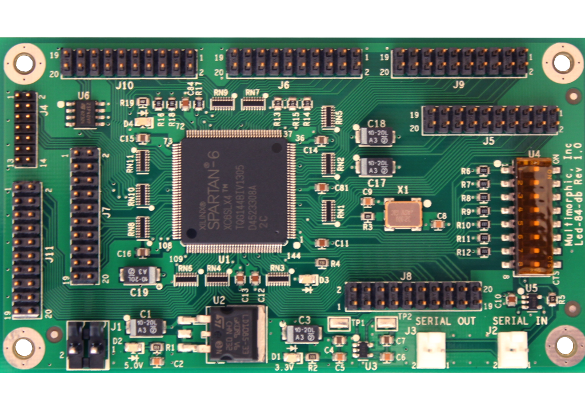Servos on a PD-LED (P-ROC/P3-ROC)
Related Config File Sections:
Starting with PD-LED v3 you can configure up to twelve steppers on a PD-LED.

To enable servos you need to configure your PD-LED board in your p_roc
section. Assuming your PD-LED has the ID 4 you can use the following
config to enable all servos and and define two of them:
p_roc:
pd_led_boards:
4:
max_servo_value: 300 # rougly maps to 2ms.
use_servo_0: true
use_servo_1: true
use_servo_2: true
use_servo_3: true
use_servo_4: true
use_servo_5: true
use_servo_6: true
use_servo_7: true
use_servo_8: true
use_servo_9: true
use_servo_10: true
use_servo_11: true
servos:
servos_4_0:
number: 4-0
servos_4_1:
number: 4-1
The number of your servos has to be id_of_your_ped_led-number. In this
case 4-0 and 4-1 for the first and second servo on PD-LED 4. You
will not be able to use LED 72 to LED 83 on the PD-LED when enabling all
servos.
max_servo_value determines the width of the pulses sent to the servo. This value can be altered to increase of decrease the servo arc within the physical limits of the device. Higher values widen pulsewidth increasing the range of motion.
DIP switch 6 of the PD-LED controls the default state of the LED outputs when the board first receives power. Because servos receive signal from LED outputs, placing this DIP switch in the on position can activate a servo prior to the PD-LED receiving instructions from the controller and MPF. This in turn may lead to a servo thermal overload state and failure. When using servos, DIP switch 6 should be maintained in the OFF position.
You should hook up your servos to an external power source (usually 5V) and not draw that power from the PD-LED. However, make sure to connect the ground of your power supply. See Voltages and Power for details.
Overview video about servos:
What if it did not work?
Have a look at our troubleshooting guide for the P/P3-Roc.
Something missing or wrong? You can fix it!
This website is edited by people like you! Is something wrong or missing? Is something out of date, or can you explain it better?
Please help us! You can fix it yourself and be an official "open source" contributor!
It's easy! See our Beginner's guide to editing the docs.
Page navigation via the keyboard: < >
You can navigate this site via the keyboard. There are two modes:
General navigation, when search is not focused:
- F , S , / : open search dialog
- P , , : go to previous page
- N , . : go to next page
While using the search function:
- Down , Up : select next / previous result
- Esc , Tab : close search
- Enter : go to highlighted page in the results